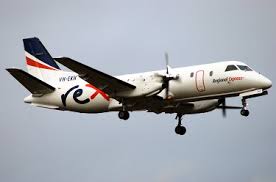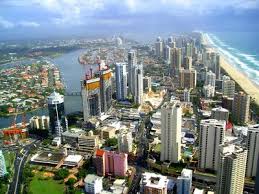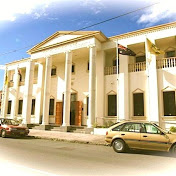
Debris that washed ashore on Réunion bears similarities to a wing section of a Boeing 777, the same model as MH370. (Note: Debris may come from different side of plane than pictured.) WSJ Source: Supplied
A part number on a piece of aircraft wreckage found in the Indian Ocean confirms the object is from a Boeing 777, a Malaysian transport official says.
“From the part number, it is confirmed that it is from a Boeing 777 aircraft. This information is from MAS (Malaysia Airlines). They have informed me,” Deputy Transport Minister Abdul Aziz Kaprawi said today.
The part has been sent to Toulouse in France, where experts hope to verify if it came from MH370.
MH370: what we know so far
More than a year after Malaysia Airlines Flight 370 went missing en route from Kuala Lumpur to Beijing, the discovery of airplane debris on Réunion, a French island near Madagascar, has added another twist to one of aviation’s greatest mysteries.
1. What happened to MH370?
Flight 370 is thought to have crashed in the southern Indian Ocean after veering off its intended flight path on March 8, 2014, with 239 people on board. Investigators believe it ran out of fuel. No trace of the aircraft has been found. But debris that washed ashore on Réunion bears similarities to a wing section of a Boeing 777, the same model as the missing jet. The wing segment normally helps control the craft’s movement.
2. How did the search unfold?
Malaysia and Vietnam initially searched in the South China Sea, near the plane’s last reported position. The search then expanded to the Indian Ocean after investigators found that the jet transmitted information to a satellite—leaving a trail of data that investigators mined to help identify a likely crash site, far off the southwestern coast of Australia. In April 2014, the operation refocused on an area the size of West Virginia. That zone has since been doubled to up to 46,000 square miles. (See a timeline of the search below)
3. Who is involved in finding the plane?
Malaysia and Australia have been leading the search, along with China, which had more citizens than any other nation on the plane. Officials have questioned the conventions that have led to Australia’s bearing the brunt of search costs–about US$66 million. French officials are trying to determine the provenance of the debris that washed up on Réunion, with input from Australia, Malaysia and aircraft manufacturers.
4. What about the conspiracy theories?
The mystery has left the field open for some to pursue their own inquiries. Sara Bajc, whose partner Philip Wood was on the plane, is skeptical of the official investigation. She scrolls through tips about the plane submitted by the public, including those claiming to have seen an object flaming in the sky the day Flight 370 disappeared. Others allege there has been a coverup. One group has set up a website called The Hunt for 370. Another group of family members, Voice 370, has pushed for Malaysia to release more information on the plane’s cargo.
5. Where do the search and investigation go from here?
The airplane debris that washed up on Réunion could be the first tangible evidence that investigators were right: the plane crashed in the Indian Ocean. But locating the remainder of the wreckage would be a hard task, relying on complex calculations about ocean currents and weather patterns over nearly 17 months. Officials caution it is too soon to say whether the debris is linked to Flight 370.
The Hunt for MH370
Flight 370 went missing more than a year ago with 227 passengers and 12 crew members on board. Here are the key developments in the search:
March 8, 2014
Flight 370 departs Kuala Lumpur International Airport at 12:41 a.m. bound for Beijing, but loses contact with civilian air-traffic control less than an hour into the flight. Malaysia and Vietnam start searching in the South China Sea, near its last reported position. On board were 227 passengers and 12 crew members.
March 9
Based on the Royal Malaysia Air Force’s radar recording, there was a possible “turnback” by Flight 370. The search area is extended from the South China Sea to the Strait of Malacca, on the other side of the Malay Peninsula.
March 11
Police say the investigation into the missing plane would examine the possibility of hijacking, sabotage, and psychological and personal problems among passengers and crew.
March 14
The international search expands to the Indian Ocean.
March 15
Malaysia’s Prime Minister Najib Razak says there is a “high degree of certainty” that the plane’s two communications systems were disabled. He says data relayed by the plane to a satellite confirms it diverged from its planned route and that its last satellite communication came at 8:11 a.m.
March 24
Mr. Najib announces that satellite data released by Inmarsat concluded that the missing plane ended its flight in the southern Indian Ocean, west of Perth, Australia.
April 8
The flight data recorders, known as black boxes, reached their approximate 30-day battery life expectancy and would no longer send locater signals.
April 28
The search coordinated by the Australian Maritime Safety Authority moves to an underwater phase, assisted by Malaysia and China.
June 26
The search shifts farther south and the Joint Agency Coordination Center leading the effort says there is a strong possibility that MH370 was on autopilot when communication with the satellite stopped.
January 29, 2015
Officials declare MH370’s disappearance an accident, and say that all 239 people aboard are presumed to have died.
July 29, 2015
Investigators were examining a piece of an aircraft that was found on Réunion Island but they couldn’t confirm whether it was from Flight 370, which is believed to have crashed off the southwestern coast of Australia more than a year ago.
source:theaustralian.com.au





















